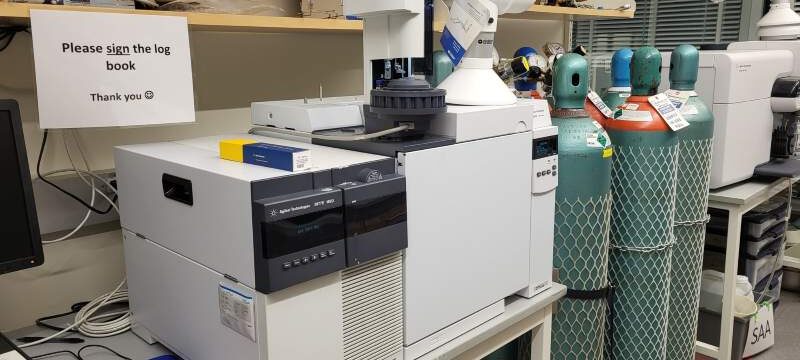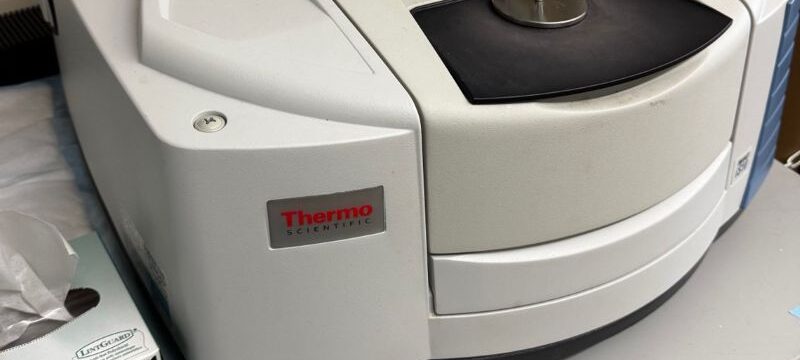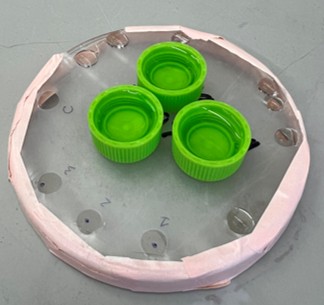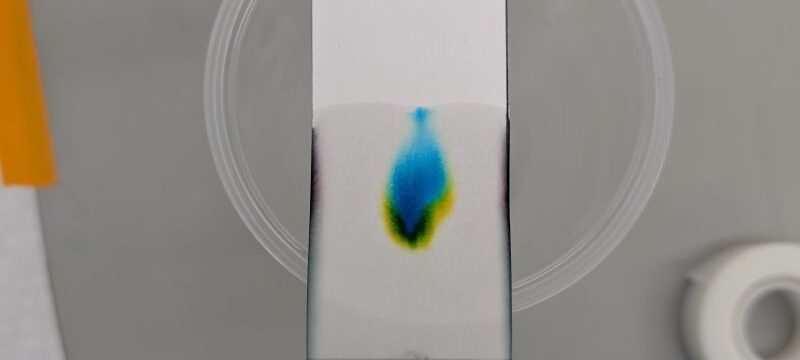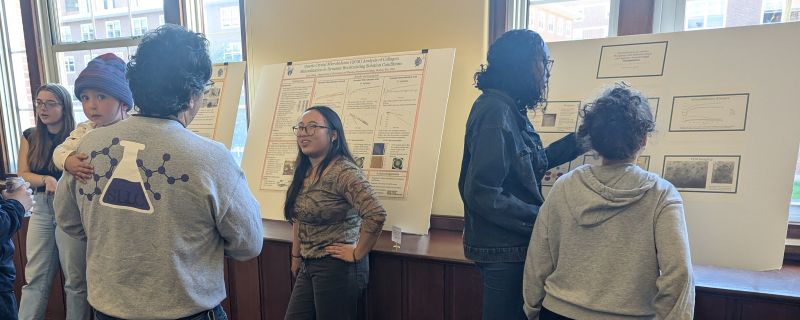Feb21
Posted on Feb 21 by
Sometimes the best way to learn and best way to teach is to make a mistake! At least that’s what Dr. Gerdon is telling himself. When the gold electrode on a QCM crystal needs to be cleaned to produce a hydrophobic surface, we often use a mixture of chemicals called piranha (Caution! This is needs to be done in a fume hood very cautiously!). It helps to give the QCM crystal a cursory clean before using piranha, otherwise you can end up depositing insoluble material on the surface that just won’t seem to come off (see the picture above). Now we have good example of what not to do when cleaning QCM crystals! Dr. Gerdon hopes to get back in the lab...
Feb14
Posted on Feb 14 by
Research isn’t the only fun extracurricular that GRAB Lab members are involved in. When Kassidy isn’t in the lab making collagen hydrogels, she is spending her time working towards entering the medical field. Research is a great opportunity to learn and expand your knowledge. It also looks great when applying to graduate programs. Kassidy has recently passed her written EMT exam and is planning on saving lives this...
Feb14
Posted on Feb 14 by
With the Patriots winning the Superbowl and getting their sixth championship ring, the city is buzzing with excitement. The members of GRAB Lab are celebrating the Pats win but are also excited to be getting back into the lab now that we are few weeks into the semester. Since being back in the lab, Stephanie has been working on fine-tuning a calcium carbonate mineralization method and is excited to hopefully start working with DNA aptamers. Can football success inspire good lab technique, stellar experimental design, and thorough statistical analysis? Dr. Gerdon thinks so! #TBISTHEGOAT #6RINGS...
Jan31
Posted on Jan 31 by
It’s the beginning of the spring semester and 2019, but it’s important to stay focused on the future. GRAB Lab’s senior members Jake, Marielle, and Emma are all graduating in May leaving behind Alex, Steph, and Kassidy who are all Juniors. GRAB Lab is looking to expand with young talent, preferably sophomore and first year students, to carry on the work left behind. There will be no shortage of work as the focus of research has shifts to include calcium carbonate materials and the mineralization of collagen. As the seniors look to wrap up their projects, the juniors will be fresh into their new projects and keeping summer research in mind. If you are interested in biomineralization or looking to join, feel free to reach out to Dr. Gerdon or any GRAB Lab members with any questions! Calcium carbonate image courtesy of...
Nov29
Posted on Nov 29 by
Final Exams are less than two weeks away and all students on campus are starting to pick up the pace to finish their coursework strong. Research members of the GRAB Lab are no exception and our last lab group meeting of the semester is coming up next week. Does that mean research has come to a halt? No! In a student-led meeting today Alex shared some interesting results of about the morphology of calcium phosphate materials, Connor shared results from a new standard addition method for lead analysis in Muddy River water, Emma is planning her first mineralization experiment, Jake has high hopes for both CD and LC-MS experiments, Marielle is learning QCM protocols, Stephanie has conditions worked out for calcium carbonate plate reader experiments, and Kassidy is learning about collagen. That’s an impressive end to the semester! Group meeting is about more than just sharing of data, it is also about working together as a team and encouraging each other to struggle mightily, sometimes fail, and learn a...
Nov16
Posted on Nov 16 by
After shadowing Jake for a couple of weeks and working with calcium phosphate, Stephanie has now started her own experiments having to do with calcium carbonate. This calcium carbonate experiment requires some serious pipetting skills and masterful organization. This allows Stephanie to get away from the stress of every day classes, focus on research, and catch up on new music which she listens to while doing...


